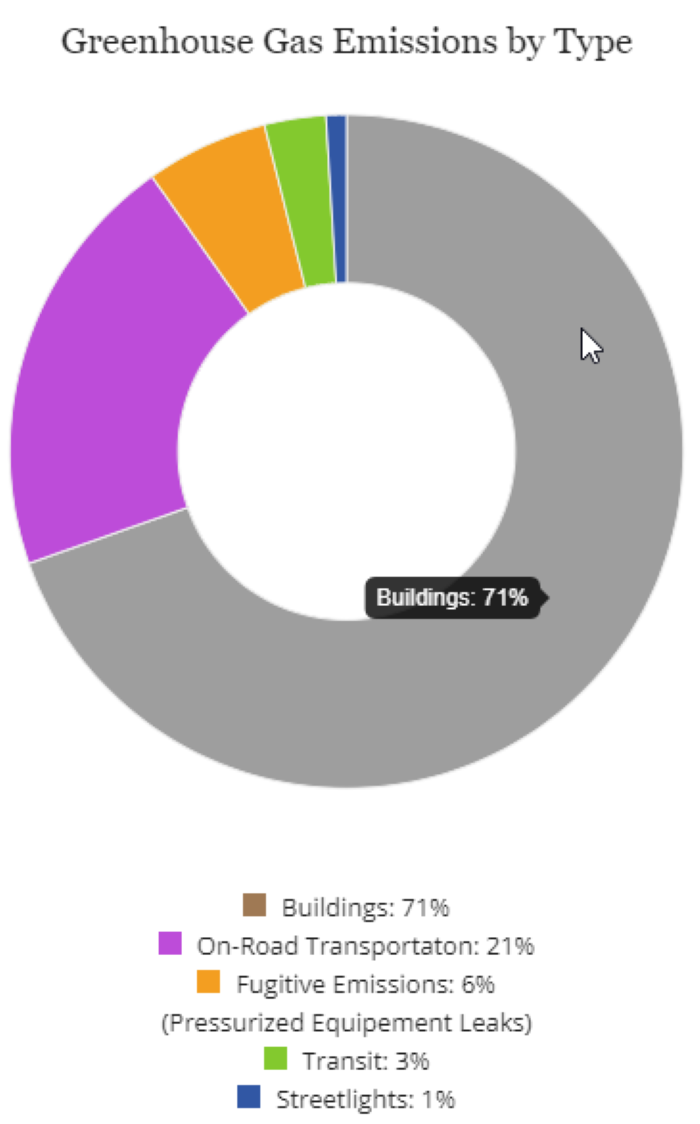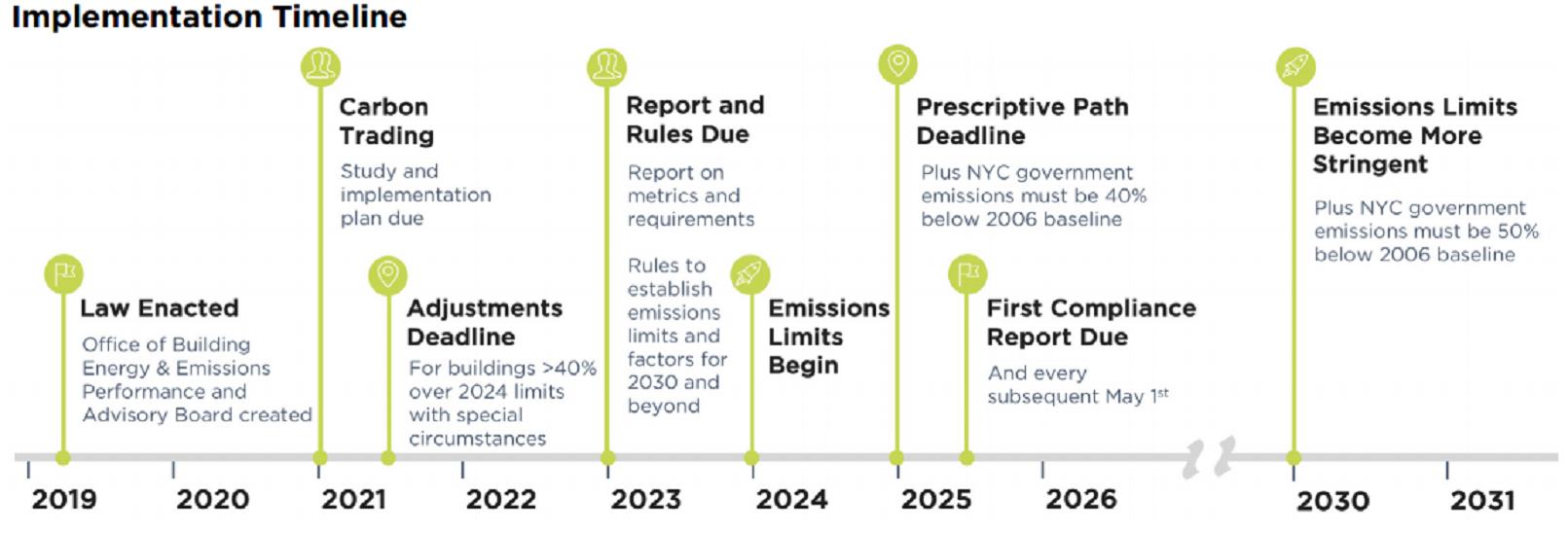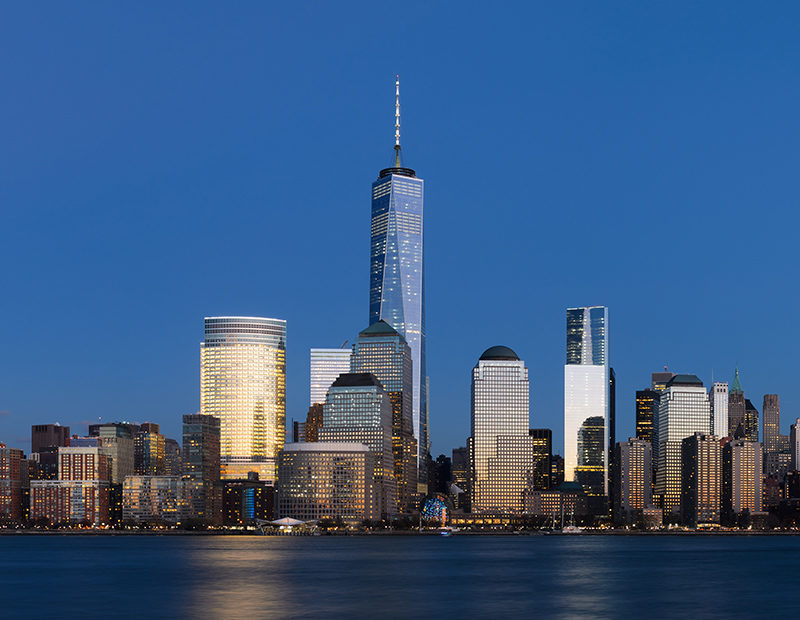Navigating NYC’s Landmark Energy Law
Brian Fridkin of Yardi Energy sheds light on complying with New York City's far-reaching regulations.

Brian Fridkin, Yardi Energy
Among the most significant energy-related legislation in recent memory is New York City’s Local Law 97, which raises the bar for any owner, manager or investor in the nation’s largest commercial real estate market. Part of the city’s Climate Mobilization Act, Local Law 97 (sometimes referred to as LL97 for short) sets emission limits for all buildings over 25,000 square feet beginning in 2024. LL97 is central to the city’s plan for reaching its goal of reducing carbon emissions 80% by 2050.
Brian Fridkin, New York City-based team lead with Yardi Energy, has been analyzing the impact of the ordinance since it was enacted in 2019. In the first of two parts, he explores its implications of the issue in a wide-ranging exchange with Paul Rosta, CPE’s executive editor.
What’s the significance of Local Law 97 for property operations in New York City, and what will change?
Emissions limits for buildings will be lowered, meaning over time buildings will have to find new ways to increase energy efficiency. The law was designed so that the worst-performing 20 percent of buildings will need to reduce emissions to comply with the 2024 deadline. In 2030, the emissions limits are nearly cut in half, which will require the worst-performing 75 percent to reduce emissions in order to comply for the next set of years.
 These regulations mean that buildings will have to calculate their emissions and emissions limits, increase base building energy efficiency, work with tenants to increase efficiency, and look into other opportunities to comply with LL97.
These regulations mean that buildings will have to calculate their emissions and emissions limits, increase base building energy efficiency, work with tenants to increase efficiency, and look into other opportunities to comply with LL97.
Should owners, property managers and consultants outside of New York City be paying attention, too?
Absolutely. As more cities and states around the country realize the threat of global climate change, we will see more of these types of programs being created.
States and cities all over the country have set climate action goals to reduce their energy emissions and many already require energy benchmarking of properties using Energy Star Portfolio Manager. While there are various other methods of reaching emission reduction targets, implementing emissions caps for buildings is a likely progression. In New York City, 71 percent of all emissions come from buildings. Targeting buildings emissions is an effective way to reach reduction targets.
Tell us about the goals of the new law. Which building categories are affected, and what’s the timeline?
The goal of LL97 is to help the city in reaching an 80% reduction in carbon emissions by 2050. With 71% of emissions coming from buildings, setting emission targets is going to greatly aid in reaching that goal.
Buildings over 25,000 square feet must comply with this law, which are the same buildings that have to comply with LL84, annual benchmarking.
The first year buildings will have to comply with LL97 is 2024, but there are several other important dates to keep in mind. By January 2021, the Office of Long-Term Planning and Sustainability will complete a feasibility study on a carbon trading program, which may be another way to comply with the law.
 By January 2023, the actual report buildings will need to complete and the rules for completing it will be released, as well as the emissions limits and emissions factors for 2030 and beyond. By the end of 2024, buildings must complete all of the prescriptive path requirements. The first compliance reports will be due May 1st, 2025.
By January 2023, the actual report buildings will need to complete and the rules for completing it will be released, as well as the emissions limits and emissions factors for 2030 and beyond. By the end of 2024, buildings must complete all of the prescriptive path requirements. The first compliance reports will be due May 1st, 2025.
What major changes to operations will be required?
The law contains a list of required prescriptive energy conservation measures that buildings must take, most of which are lower cost measures with quick paybacks. These include insulating pipes for heating and hot water, upgrading lighting, ensuring steam traps are in working order, weatherizing and air sealing, etc.
But for many buildings, just completing the required measures won’t be enough to meet the emissions limits in the law. If you have already completed your LL87 Audits, those recommendations might be a good place to start. Owners will also need to invest in optimizing their HVAC system, fault detection and diagnostics, and metering building equipment. Buildings may have to replace outdated systems, installing solar or wind generation, or other creative measures.
One important thing to note is that the city also authorized PACE (Property Assessed Clean Energy) financing for energy upgrades under Local Law 96, which established a special loan program for energy saving projects. These loans offer low or no upfront costs, low interest rates and longer terms than typical financing. Because they are repaid through the property tax bill, the new owners will take on the loan if the property is sold.
Tenant engagement is always crucial to stepping up energy efficiency. Any suggestions for getting end users on board?
Tenant engagement is critical to complying with LL97. Just like LL84 (benchmarking), this law uses the entire building’s energy consumption to calculate emissions.

Lower Manhattan. Image courtesy of King of Hearts
In many buildings well over 50 percent of your consumption—and therefore emissions—are generated by tenants, so you must engage them to comply with the bill. LL88 requires that tenants be submetered for their electricity usage. Analyzing that data is a great way for buildings to target tenants that could be helpful in reducing building emissions.
It’s also important to reconsider future leases to require tenants to engage in energy efficiency. You may decide to turn down tenants who may be energy hogs. With current tenants, you can discuss lighting upgrades or installing occupancy sensors in their spaces. You can start having tenant energy competitions to see who can reduce their emissions the most. You can also work on switching out tenant HVAC units for more efficient ones or tying in tenant HVAC to the building’s system.
If a property fails to meet the program’s goals on time, what will be the consequences? Would owners be subject to penalties?
The penalty for not complying with the emissions target for your building will be a fine of $268 per ton. This can quickly add up especially across a portfolio and end up being hundreds of thousands of dollars. It’s important for buildings to start calculating their current emissions and emissions targets now so they can understand what their penalties may be. It is better to spend that money of efficiency upgrades that will have a payback than to have the sunk cost of paying these penalties year after year.
Other than increasing your building’s energy efficiency, there are three other ways to reduce your emissions for LL97.
- Through the purchase of renewable energy credits, though there are very specific guidelines. RECs must come from renewable energy directly transmitted into New York City. Currently these don’t exist. Two transmission projects, the Champlain-Hudson and the Empire Transmission lines, will be completed in 2024 and will bring renewable power to NYC, as of how, however, that power is only going to be sold in long-term PPA contracts, which may not be a viable option for many buildings. Several wind turbine projects are being developed off Long Island, at least one of which will bring power to NYC.
2. The purchase of greenhouse gas offsets. These don’t have a geographic limitation like the RECs do, but you can only use these for up to 10 percent of a building’s annual emissions limit.
3. There is also language in LL97 that creates an option for a carbon trading program. The first step is for the Office of Long-Term Planning and Sustainability to do a feasibility study on this. In theory it would be a system where a building that is under their limit can sell their extra emissions to an owner whose building is over its limit, with a cap on the price under the $268/ton penalty in the bill. This option would likely be much cheaper in the early years of the bill but increase as it gets more and more difficult to find ways to hit emission targets. The study on carbon trading is due at the beginning of 2021.
Next month: More on strategies for complying with Local Law 97.







You must be logged in to post a comment.